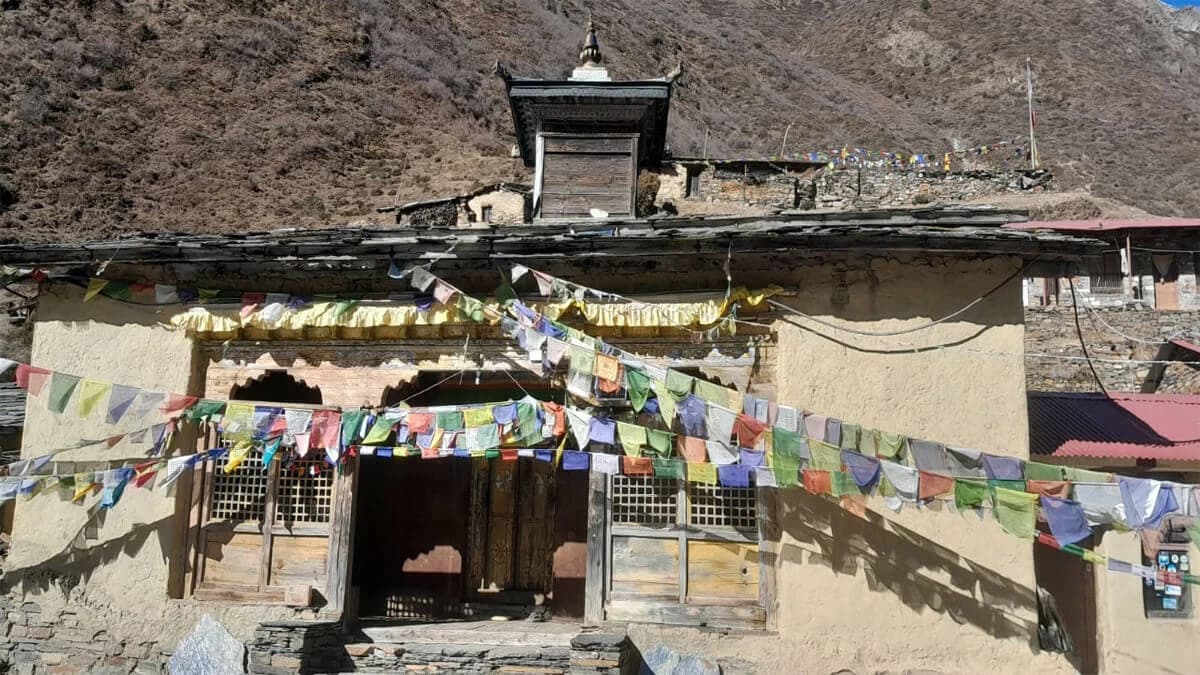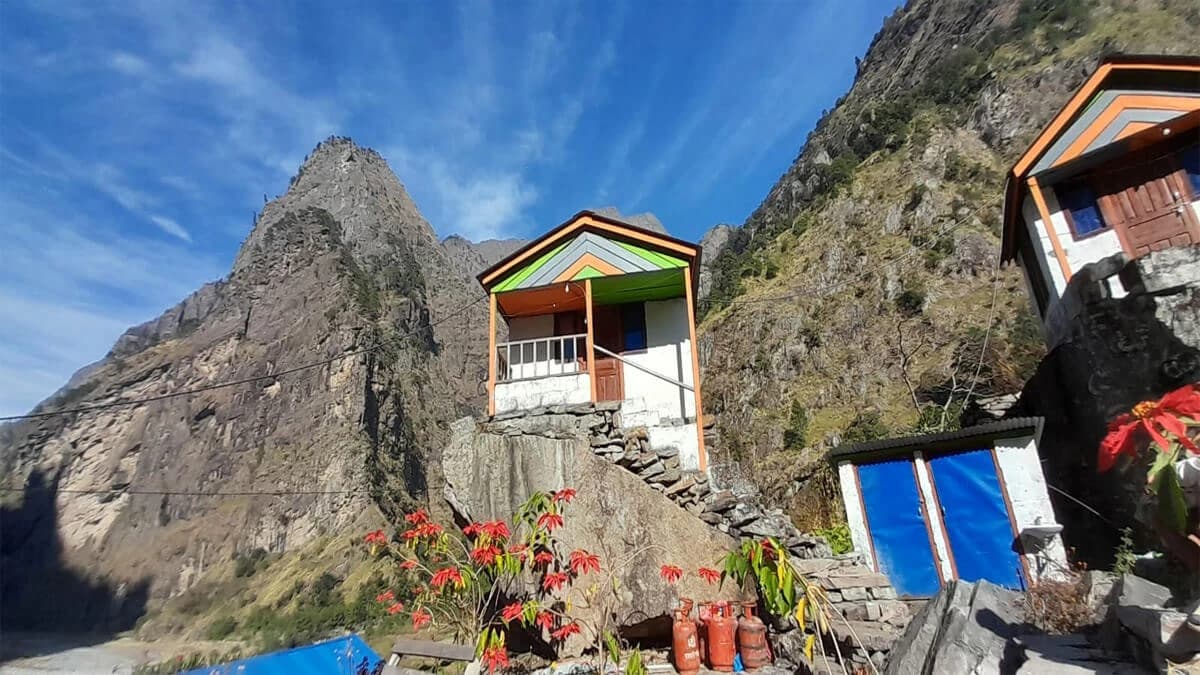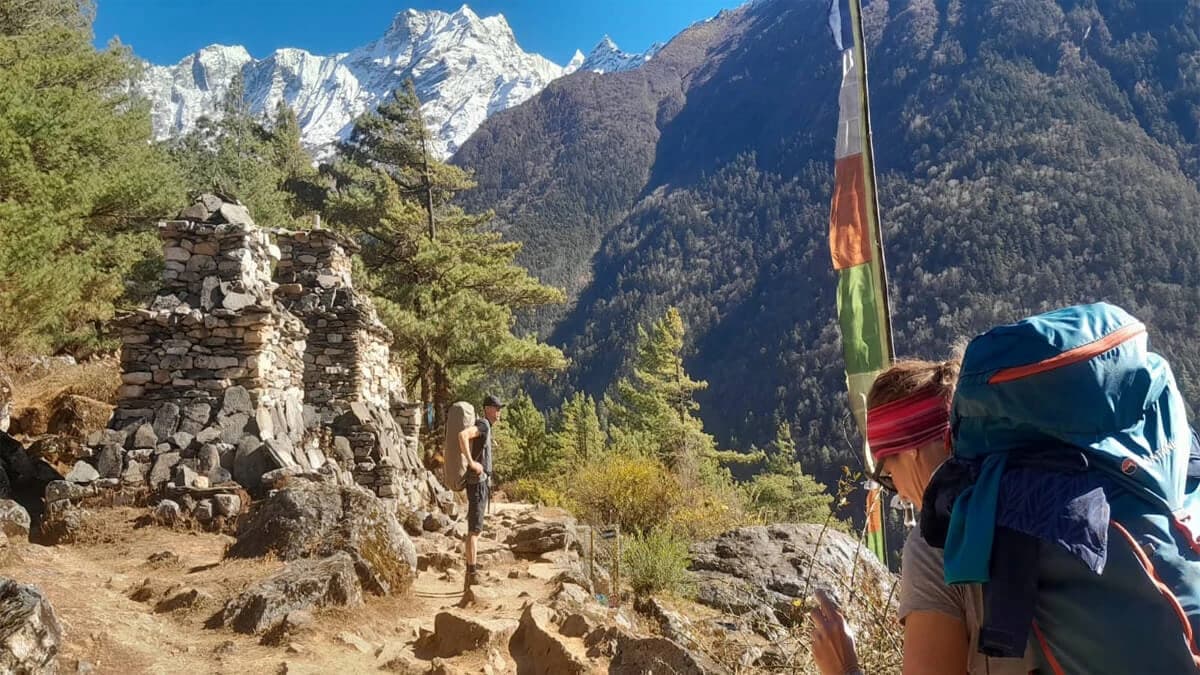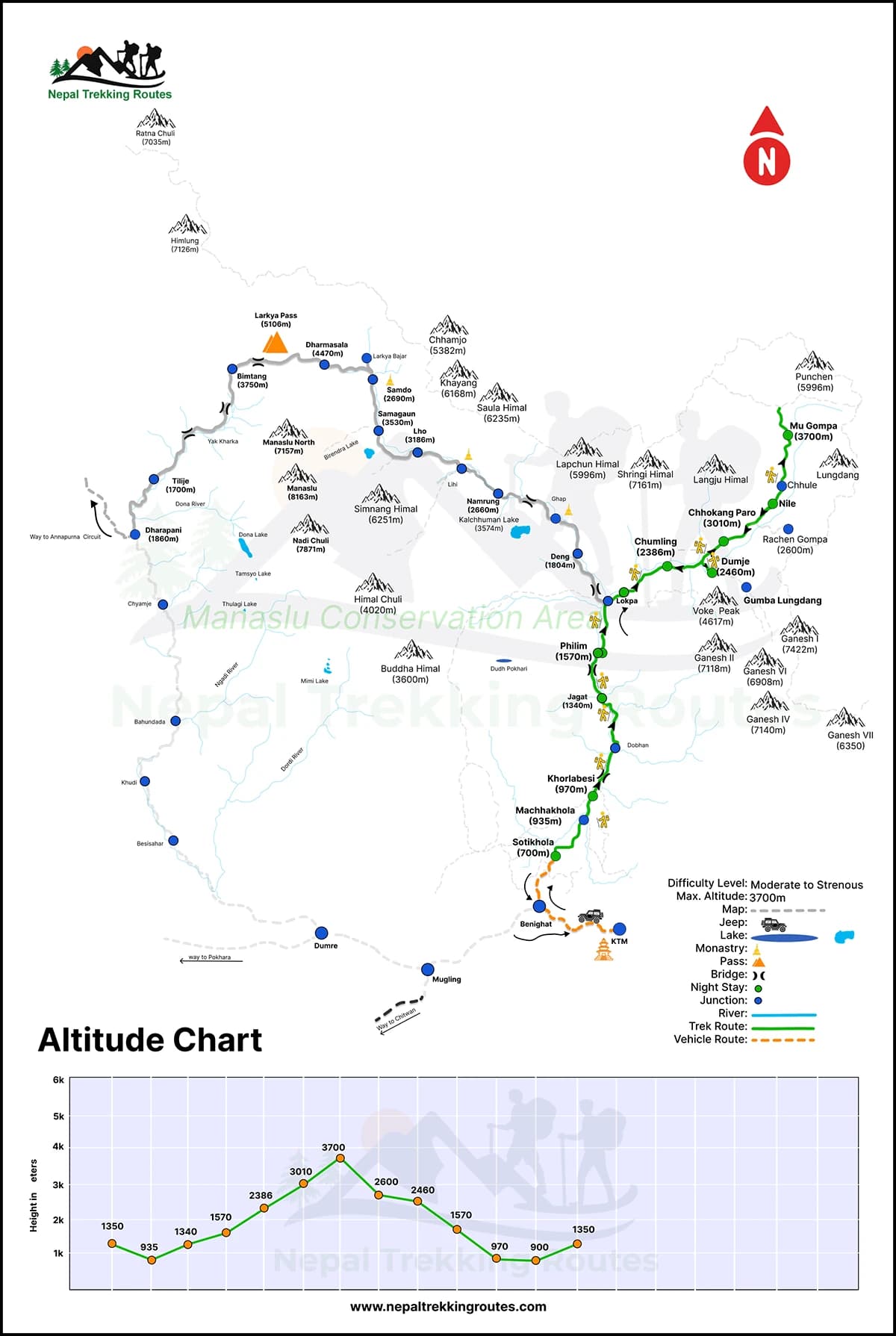Tsum Valley Trek Overview
Do you want to visit the hidden valleys closer to the Kathmandu Valley? Do you want to observe Bon's religion, culture, and tradition in the Northern Himalayas? I know, your answer is a big “YES!” Tsum Valley Trek is the only option you have for this wonderful experience once in Nepal. Located in the proximity of Manaslu (8,163 m), Tsum Valley is one of the two important valleys of the Manaslu region trek. Populated by the people of Tibetan origin called “Tsumbas”, this valley has 18 small villages. Around 4,000 people who follow Tibetan Buddhism and Bon religions live here. The Buddhist and Bon shrines are common cultural attractions during this trek.
Tsum Valley Trekking is the most popular off-the-beaten-path trekking in Nepal. The Government of Nepal did not open this valley to international trekkers until 2008. It was done to protect the native culture and tradition from foreign influence. While hiking in Nepal along the rugged trails going up and down, you can enjoy the flora and fauna of the Manalsu Conservation Area Project. This conservation area consists of an estimated 2,000 flowering plants.
The pine, oak, juniper, birch, and rhododendron trees are the major plants. If you make the Tsum Valley trek in the spring season, this area looks exactly like a bride on her wedding day! In addition, you can also have glimpses of Himalayan animal species during this journey. Some common animals are musk deer, Himalayan thar, red panda, Himalayan black bear, etc. Even some bird species play hide-and-seek with you while trekking in Nepal along the isolated trails.
Tsum Valley trek can be further connected with Manaslu Circuit trek and Annapurna Circuit trek as well. Manaslu Tsum Valley trek takes you to Manaslu Base Camp trek.
Here are some of Major Highlights of Tsum Valley Trek
- Scenic drive to Soti Khola
- Gurung and Tibetan Villages of Manaslu region
- Astounding view of Manaslu (8,163m), Ganesh Himal (7,422m), Himalchuli (7,893m), Buddha Himal (6,692m), Shringi Himal (7,165m) and Tibetan Plateau
- Flora and fauna of Manaslu Conservation Area Project
- Mu Gompa and Rachen Gompa as the landmarks of the Bon religion
- Best off the beaten path trekking near the Kathmandu Valley
- Tsum Valley is the hidden gem of the Manaslu region
Bon Religion in Tsum Valley Trek
Trekking to Tsum Valley lies in the proximity of the Tibetan Plateau in the Northern Himalayas. Although it is located in Nepal geographically, you find a high influence of Tibetan religion, culture, and tradition. It is surrounded by the soaring Himalayas from all three sides except the eastern part. Buddha Himal (6,692 m) and Himalchuli (7,893 m) from the west, Ganesh Himal (7,422 m) from the south, and Shringi Himal (7,165 m) from the north circumscribe this hidden valley.
Manaslu region contains two major valleys: Nubri and Tsum. Nubri Valley is exposed to the outer old and influenced by the imported culture as people of this valley go for foreign employment. However, Tsum Valley is a collection of 18 villages. Around 4,000 indigenous ethnic people called “Tsumbas” live in this region. Most of the people of this valley are of Tibetan origin.
The residents of this valley follow Buddhism and the Bon religion originated from the Tibetan Autonomous Region. You will see many monasteries, chortens, and mani walls reflecting the Bon religion. The most significant shrines of this region are Mu Gompa and Rachen Gompa. Both the shrines are resided by around 100 monks and nuns. You can find the mural paintings of Tibetan Buddhism and ancient books.
Mu Gompa contains a full size of Avalokiteshwara and images of Guru Padmasambhava and Tara. There are many ancient religious books and a row of chortens. You can have a breathtaking view of the Himalayas close to the Tibetan Plateau.
Food and Accommodation Facilities in Tsum Valley Trek
In the beginning, the Tsum Valley trekking used to be completely a camping trek in Nepal. But, nowadays, it is a teahouse trekking in Nepal as there are teahouses established on the trail. Besides, you can also find homestay facilities in some ethnic villages. Teahouses en route provide basic facilities for food and accommodation to the trekkers. Due to the lack of transportation facilities, people cannot carry all the stuff required for luxurious facilities.
Although basic, beds are clean with warm quilts or blankets to protect against the cold temperature. If you like, you can take your sleeping bag with you. The food items are hygienic and organic. They produce most of the food items and vegetables in their farmlands. They don’t use chemical fertilizers in the plantation of crops and vegetables. Nevertheless, we highly recommend you avoid the non-veg items as they may not be fresh in the high altitudes.
Homestay sites also provide the same kind of food and accommodation facilities. The more interesting side of homestay is that you get to eat with the host family. You can even learn to cook their food items instead. On the other hand, it is a great opportunity to be friends with the friendly people of the rustic setting. It gives you a chance for cultural exchange with the host family. Most significantly, you will contribute directly to the economic aspect of the remote villages.
How to Get Tsum Valley Trek
You have a couple of alternatives to start the Tsum Valley trek. One, you can follow Kathmandu-Gorkha-Aarughat-Soti Khola. The other, Kathmandu-Dhading-Aarughat-Soti Khola. But, the scenery of both the routes is not much different. From Soti Khola, you ascend higher by following the uphill and downhill trails. You go past some Gurung villages until you reach the destinations. Trekkers will relish the brilliant view of the Himalayas of the Manaslu region and Ganesh Himal region.
Travelers will reach almost the border of Nepal with the Tibetan Autonomous Region. You will visit Mu Gompa and Rachen Gompa as well. After getting first-hand knowledge about Tibetan Buddhism and the Bon religion, you descend towards the lower altitude. It takes nearly 9 hours to reach Soti Khola, the gateway to the Manaslu Tsum Valley trek from Kathmandu. You will remain in this picturesque region for about 12 days by enjoying the cultural and natural features.
Tsum Valley Trekking Permits
Tsum Valley trek is associate with restricted area trekking in Nepal. It means solo Nepal trekking wouldn't be allowed here. You must be in a group of two associated with a registered trekking guide. The Government of Nepal had banned this trekking region for foreign trekkers. When the Government feels insecure regarding the local culture and tradition, it puts restrictions on trekking.
Tsum Valley Trek is the abode of Tibetan Bon and Buddhist religion and its cultural wonders. In Nepal, the Bon religion exists only in two regions: Upper Dolpo and Tsum Valley. If solo trekking to Tsum Valley is allowed, this may encroach on the authentic socio-cultural aspects, too. Therefore, you require a special trekking permit for the Manalsu Tsum Valley trek. You don’t need a TIMS Card to make this trek although. Altogether, you have to have the following trekking permits.
Manaslu Conservation Area Project (MCAP) Entry Permit during the Tsum Valley Trek
To protect the wildlife and vegetation of the Manaslu Tsum Valley region, the government has established MCAP. This trek introduces you to the unique flora and fauna of this Himalayan region. Hence, you should have an MCAP Entry Permit. MCAP permit cost is USD 30 per person per entry. The permit works during your stay in the respective region. You can get this permit either from Jagat en route or the Nepal Tourism Board Office, Kathmandu.
Tsum Valley Trek Restricted Area Permit (RAP)
As Tsum Valley is a restricted area trekking in Nepal, you need a special permit to visit this region. Tsum Valley Restricted Area Permit cost is different at different times of the year. From September to November, you have to pay USD 40 per person for the first seven days. Then, you have to pay USD 7 per person per extra day.
Similarly, from December to August, the very special permit costs USD 30per person for a week. After that, you will be charged USD 7 per person per additional day. The special permit will be issued by the trekking department of the Nepal Immigration Office, Kathmandu. For this, you have to submit your original passport and 4 passport-sized photos to the concerned office.




